Learning How To Make Brown Butter requires just one ingredient, a whisk, a skillet, and less than 10 minutes of your time!
Once you learn this easy method, you’ll be ready for delicious recipes such as my Brown Butter Pecan Chocolate Chip Cookies! These delicious homemade jumbo cookies take just 25 minutes or less to bake!
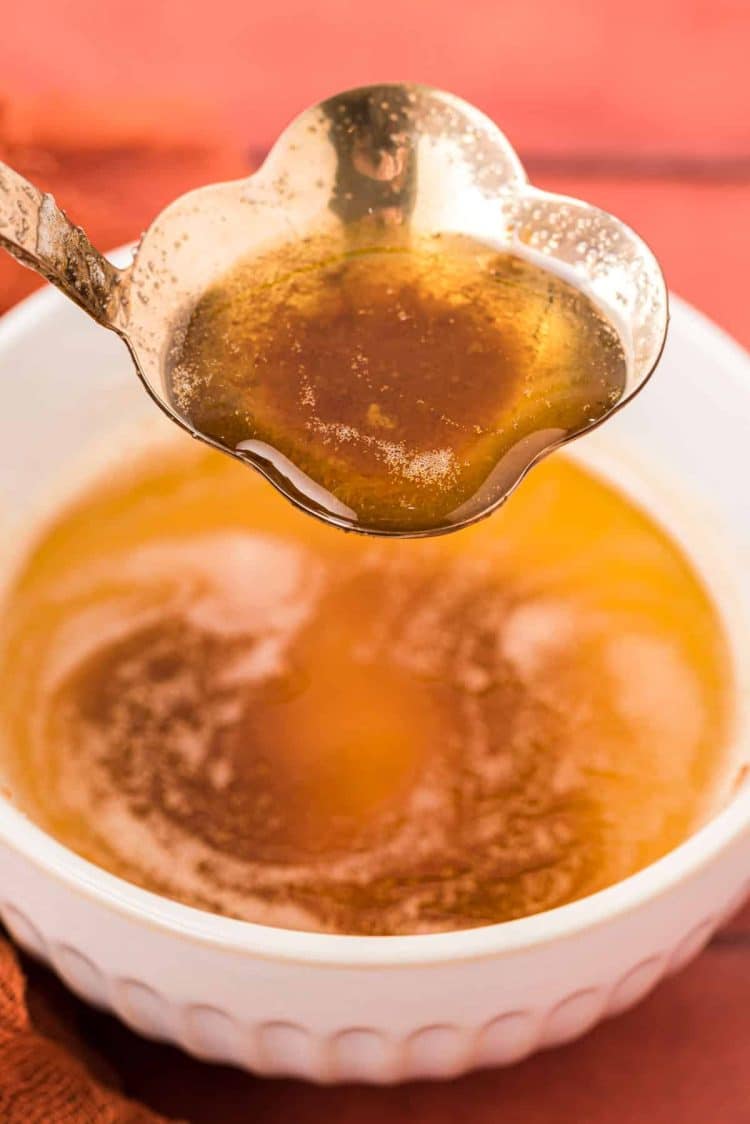
Elevate all of your recipes by learning How To Make Brown Butter! This quick and easy kitchen trick transforms all your recipes with delicious, mouthwatering flavor!
Brown butter also called beurre noisette, is just melted butter that’s been cooked to turn the milk solids brown and turn into brown specks in the pan. Once cooked the brown butter takes on a toasty and slightly caramelized flavor that gives your recipes a richer flavor! Plus that nutty aroma of brown butter is unmistakable!
This brown butter recipe can be used in any recipe that calls for regular butter. From baking to making sauces, to even pasta dishes, you’ll find yourself cooking up brown butter to use in everything!
The Best Tips For How To Make Brown Butter
- Choosing Your Pan – Using a stainless steel or light-colored pan or skillet (not a saucepan) is the best choice when browning butter. This way there’s more surface area and it’s easier to monitor the color changes in the browning process!
- Use Room Temperature Butter – Allow the butter to sit out at room temperature for 15 minutes before cooking. Doing so will reduce the risk of burning the butter during cooking!
- Slice The Butter – Slice up your butter before putting it in the skillet for a quicker, more even cooking process!
- Whisking – Once the butter has melted in the pan, you’ll need to whisk it constantly to prevent it from sticking to the bottom of the pan too much.
- When To Remove The Pan – As soon as the butter turns golden brown it’s time to remove it from the heat as well as the pan! Leaving it in the hot pan will cause the butter to continue to cook, leading to burnt butter.
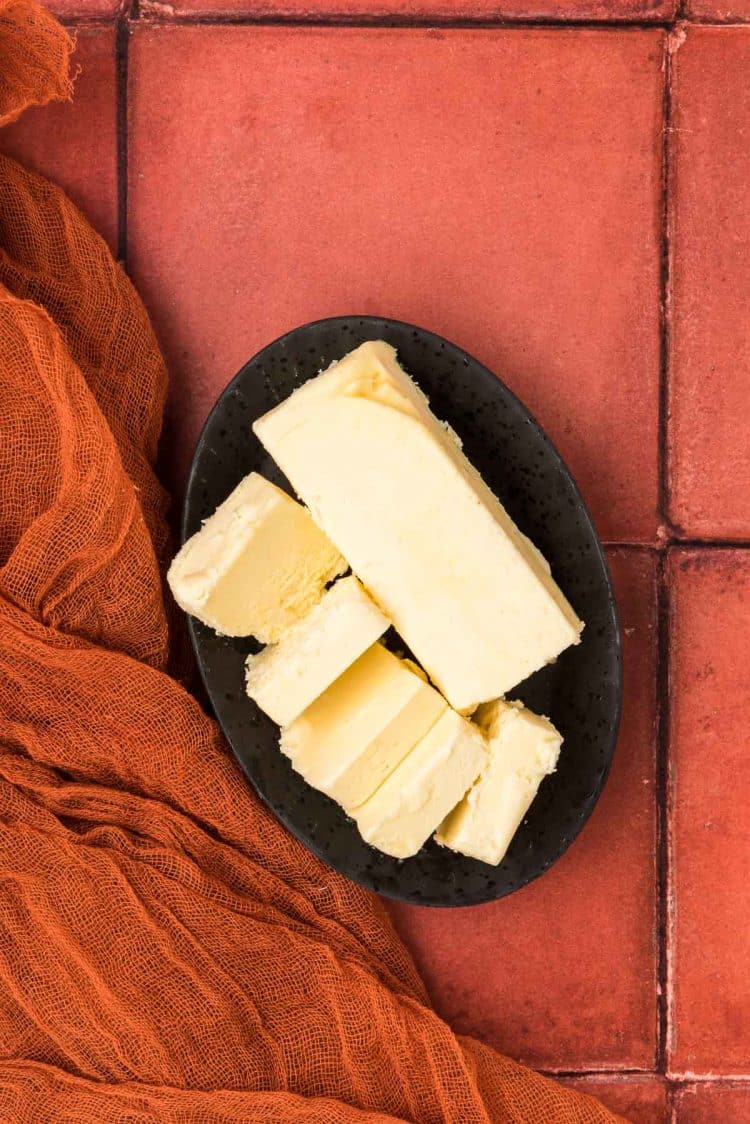
Substituting Browned Butter For Butter In Baking Recipes
Even if your recipe doesn’t specifically call for brown butter you can still substitute it yourself! Doing so adds lots of deep, rich nutty flavor and oftentimes makes the recipe taste even better!
If you choose to do so, keep in mind that you’ll need to brown more butter than what your recipe calls for. This is because when browning butter, the amount of butter you start out with will not be the amount you end up with.
This is due to the loss of water from the browning process. To make sure you have enough brown butter for your recipe you’ll want to add an additional tablespoon of butter for every 1/2 cup of butter called for in the recipe.
Once your butter is browned, you’ll need to measure out the correct amount your recipe calls for.
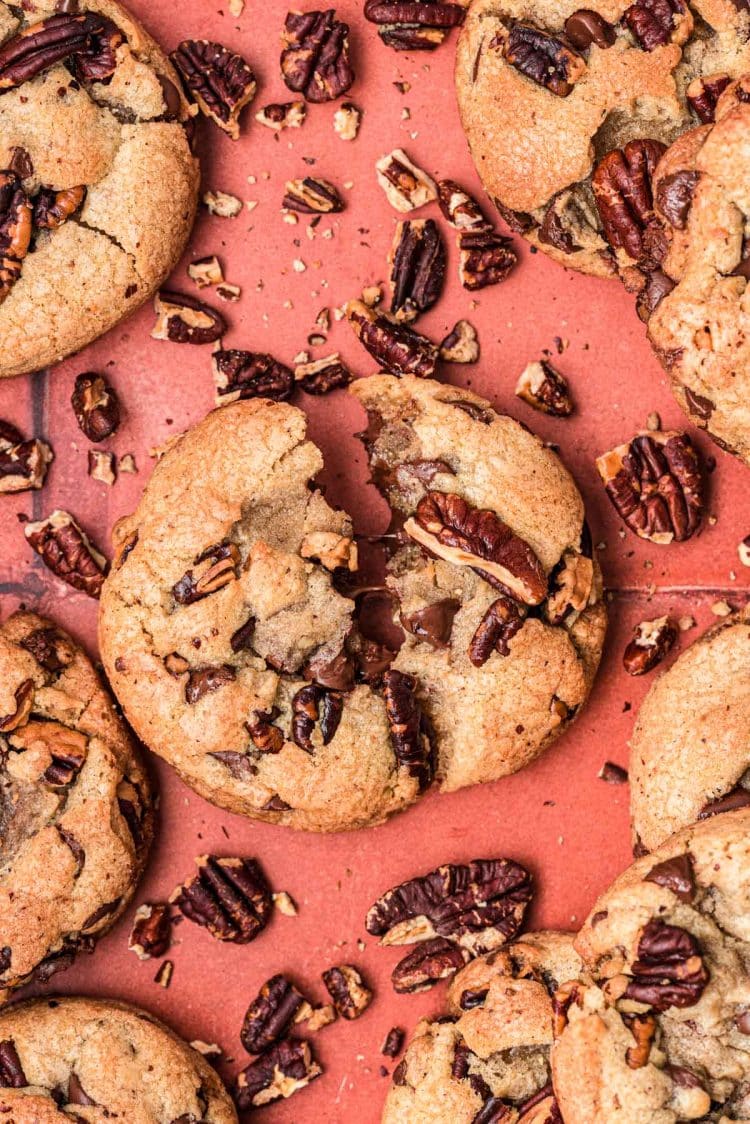
Using Brown Butter In Different Forms
If you’re using a recipe that calls for brown butter, make sure to check to see what form it calls for! Some recipes will call for melted, room temperature, or cold.
When the recipe calls for melted brown butter, such as a brown butter sauce for pasta or vegetables, you can use it as soon as the browning process is complete! Whereas if it calls for room-temperature brown butter, you’ll need to wait a bit.
For room-temperature brown butter, transfer the freshly browned butter to a heat-safe container. Then let it sit at room temperature for about an hour.
Lastly, for cold brown butter, you’ll need to place the melted browned butter into a heat-safe container. Then, place it in the refrigerator until it becomes solid.
Once the brown butter has adjusted to the form in which you need it, it can be used in your recipe!
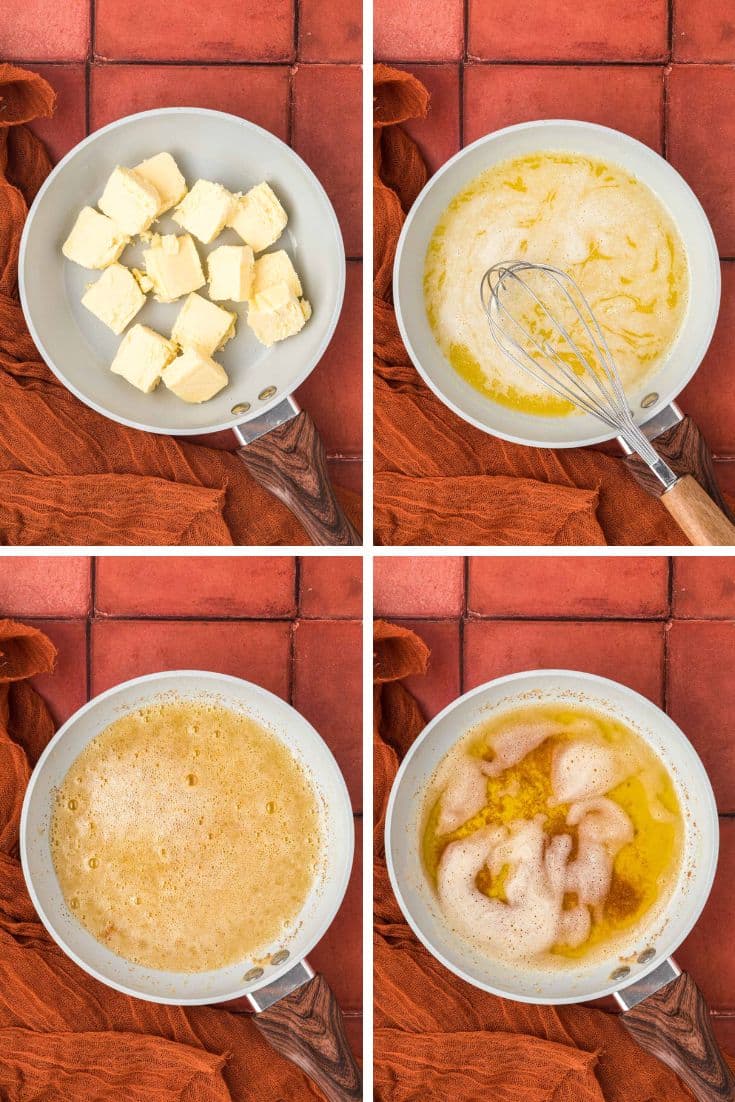
Once I learned How To Measure Flour and How To Make Brown Butter For Cookies, my favorite cookie recipes were changed for the better! Try both methods out by making my Triple Chocolate Chip Cookies!
Learning How To Heat Treat Flour and How To Line A Round Cake Pan With Parchment Paper is also helpful in the kitchen!
Can Leftover Brown Butter Be Stored?
Yes, it can be! To store brown butter, place it in an airtight container or glass jar with a tight lid. Then store the brown butter in the fridge and use it within 10 days.
Am I Supposed To Strain The Bits Out Of The Brown Butter?
Not always, the bits are what hold all the delicious brown butter flavor! Getting rid of them would affect the flavor you’re trying to add to a recipe!
Although, if you’re using a recipe that requires a smooth consistency such as a frosting you would want to strain it. To strain it pour the hot brown butter into a fine mesh sieve or cheesecloth that’s over a jar or container.
Does This Method Work For Both Salted And Unsalted Butter?
Yes, it does not matter if you use salted or unsalted butter for this method. This method for how to make brown butter works for both types!
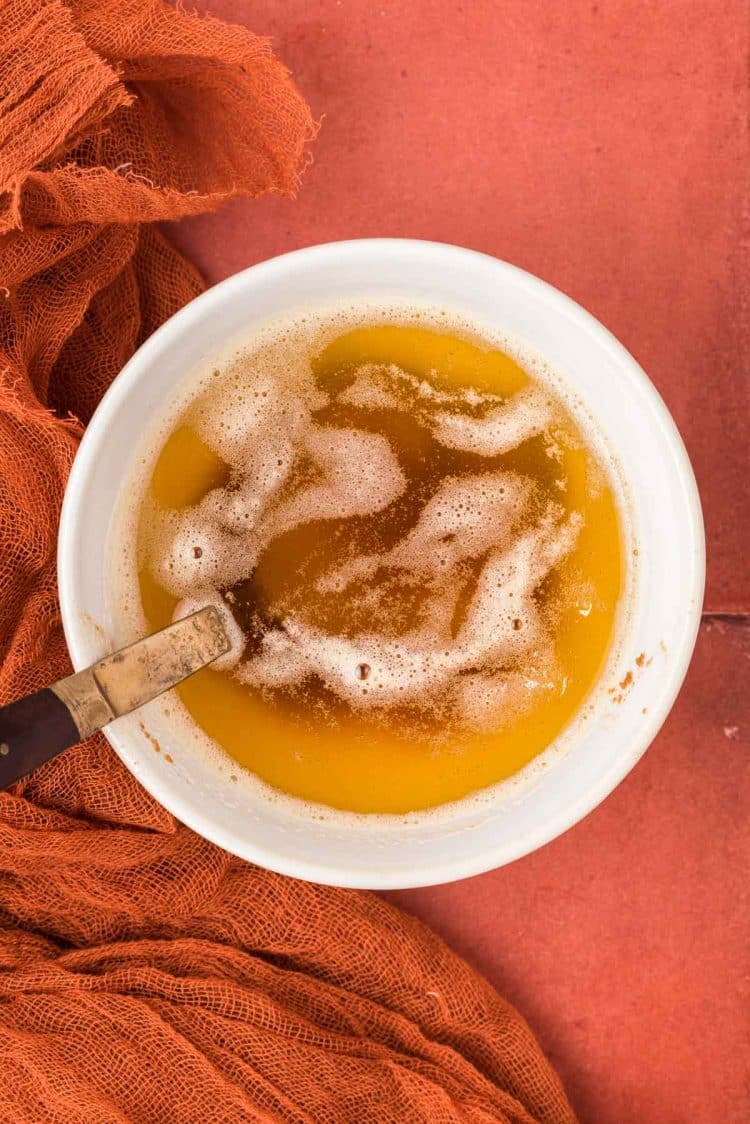
Let’s Connect!
If you’ve tried this recipe, please let me know how you liked it in the comments below and leave a review. I love hearing from you!
Don’t forget to tag me – @sugarandsoulco – on Instagram and Pinterest with your photos or join our Sugar & Soul Show-offs Community and share them there, where you can join our recipe challenges!
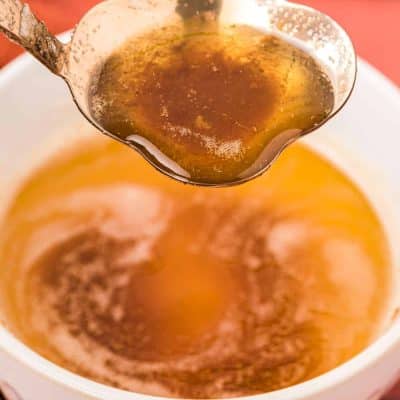

How To Make Brown Butter
Ingredients
- ½ cup butter sliced
Instructions
- Slice the butter into tablespoons and place it in a stainless steel or light-colored skillet set over medium-high heat. Using a dark non-stick skillet will make it hard to monitor the browning process and therefore isn't recommended.½ cup butter
- Allow the butter to cook until it has fully melted, about 2 minutes.
- Next, whisk the butter constantly for another 2-3 minutes until it begins to smell nutty and turn golden brown. The butter will foam on top but you’ll be able to see the color underneath as you whisk. As soon as the butter turns golden brown, remove it from the pan so it doesn’t burn.
- Store the browned butter in an airtight container in the fridge for up to ten days.
Notes
- This method will work for any amount of butter and you can use salted or unsalted.
- Slicing the butter before cooking allows for a quicker and more even cooking process.
- Letting the butter sit at room temperature for 15 minutes before cooking reduces the risk of burning.
- Brown butter is great for sauces, baking, and more.
- If a recipe calls for brown butter, use it as is in the form it calls for: melted, room temperature, cold.
- For melted you can use it right away after the browning process is complete.
- For room temperature, transfer it to a heat-safe container and let sit at room temperature for about an hour.
- For cold, transfer to a heat-safe container and place in the refrigerator until solid.
- If you want to substitute browned butter for butter in a baking recipe, you’ll need to account for the loss of water from the browning process and typically the rule of thumb is to add an additional tablespoon of butter for every 1/2 cup (or stick) of butter called for in the recipe.
Nutrition
Did You Make This Recipe?
Don’t forget to share it with me on Instagram @sugarandsoulco and follow on Tiktok @sugarandsoulco and Pinterest @sugarandsoulco for more!
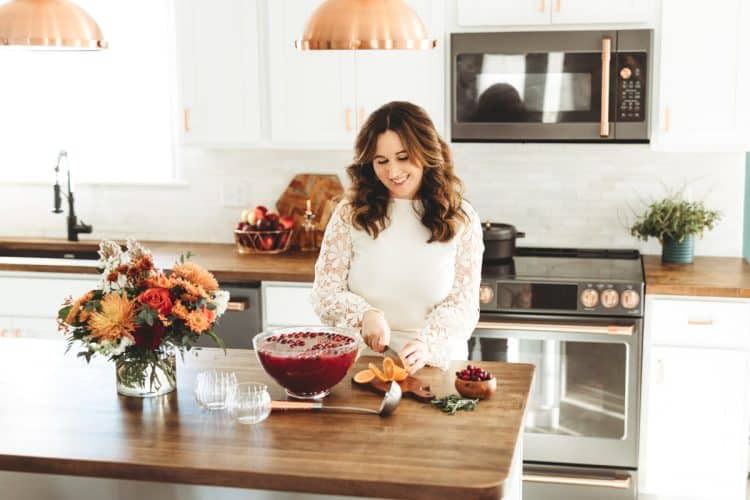










Share your thoughts!
Love this recipe? Share your thoughts with me below and leave a review! And don’t forget to connect on your favorite social platform below!